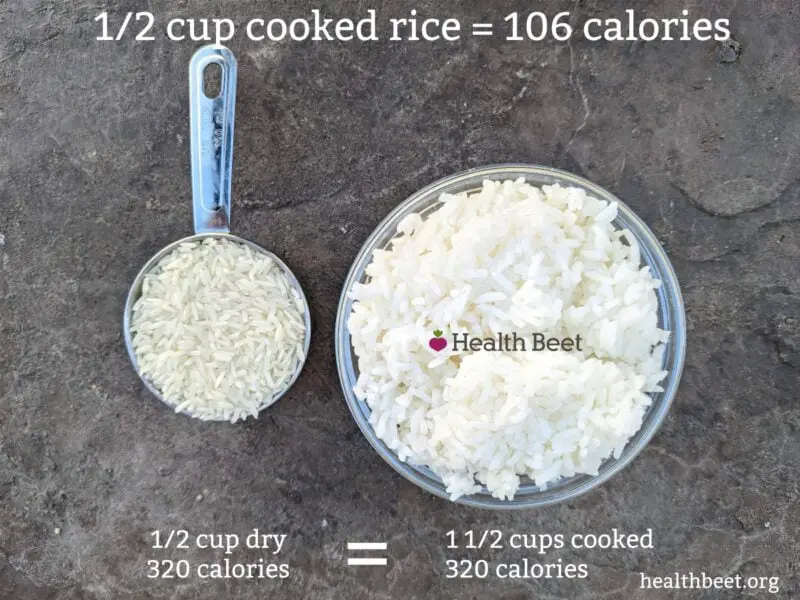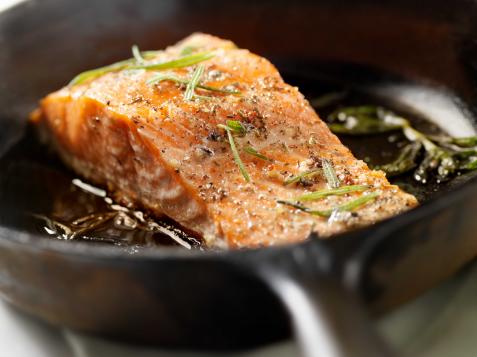Do You Measure Cooked or Uncooked Rice for Calories?
Rice is a staple food consumed by millions of people worldwide. It is an excellent source of carbohydrates, vitamins, and minerals that provide energy and vital nutrients to our bodies. However, if you are watching your weight or counting your calories, measuring the amount of rice you consume is essential. The question is, do you measure cooked or uncooked rice for calories? This article will explore the different methods used to measure rice, their pros and cons, and provide recommendations on measuring rice for calorie counting and portion control.
Overview of Rice and Calories
Before diving into the measurement methods for rice, let’s briefly discuss the types of rice and their calorie content. There are several types of rice but the most commonly eaten include white rice, brown rice, basmati rice, jasmine rice, wild rice, and glutinous rice (sticky rice).
The calorie content of rice varies depending on the type of rice and serving size. Below are some examples:
- A single cup (158 grams) of cooked white long-grain rice has about 205 calories.
- A single cup (195 grams) of cooked brown long-grain rice has about 216 calories.
- A single cup (194 grams) of cooked jasmine rice has about 238 calories.
It’s important to note that regardless of the type of rice, portion control is critical when consuming it. It’s recommended to consume half a cup to one cup per meal, depending on your activity level and caloric needs.
Now let’s move onto the different methods used to measure uncooked and cooked rice for calorie counting.
Measuring Uncooked Rice for Calories
One way to measure rice is by measuring it before cooking, also known as measuring uncooked rice. There are two main methods of measuring uncooked rice: volume method (using cups) and weight method (using ounces or grams).
Volume Method (Cups)
The volume method involves using a measuring cup to scoop out the desired amount of rice. This method is easy and convenient but can be inaccurate due to differences in how people scoop and pack the rice into the cup. To use this method:
- Use a measuring cup specifically for dry ingredients.
- Scoop out the desired amount of rice into the cup.
- Level the top of the cup with a flat surface to get an accurate measurement.
Weight Method (Ounces or Grams)
The weight method involves using a kitchen scale to weigh the desired amount of rice in ounces or grams. This method is more accurate than the volume method but requires a kitchen scale. To use this method:
- Purchase a kitchen scale if you don’t already have one.
- Weigh the desired amount of rice in ounces or grams by placing it on top of the kitchen scale.
- Make sure to adjust for the weight of the bowl or container holding the rice, which you can do by placing the empty bowl on the scale before weighing your rice and pressing “tare.”
Both methods have their pros and cons. The volume method is easy and convenient, but it can be imprecise due to variations in how people scoop and pack rice into their cups. The weight method is more precise but requires a kitchen scale, which some people may not have.
How to Accurately Measure Uncooked Rice
To accurately measure uncooked rice, it’s essential to follow these tips:
- Use the same measuring method every time you measure the rice.
- Clean your measuring cup or kitchen scale before using it to measure rice.
- Make sure the measuring cup or kitchen scale is level and on a flat surface when weighing or measuring the rice.
- Don’t pack the rice into the measuring cup or bowl too tightly. Scoop it lightly and level it off with a flat surface.
Common Mistakes When Measuring Uncooked Rice
Although measuring uncooked rice is relatively simple, there are a few common mistakes that people make when doing so:
- Using the wrong type of measuring cup (e.g., wet vs. dry measuring cups).
- Packing the rice into the cup too tightly which will result in excess rice intake and more calories.
- Not adjusting for the weight of the bowl or container holding the rice when using a kitchen scale.
To avoid these mistakes, be mindful when measuring your uncooked rice and double-check your measurements to ensure accuracy.
Measuring Cooked Rice for Calories
The other method of measuring rice for calorie counting and portion control is by measuring cooked rice. Again, there are two main methods of measuring cooked rice: volume method (using cups) and weight method (using ounces or grams).
Volume Method (Cups)
The volume method involves using a measuring cup to scoop out the desired amount of cooked rice. This method is easy and convenient, but it can be imprecise due to differences in how people scoop and pack the rice into the cup. To use this method:
- Use a measuring cup specifically for dry ingredients.
- Scoop out the desired amount of cooked rice into the cup.
- Level the top of the cup with a flat surface to get an accurate measurement.
Weight Method (Ounces or Grams)
The weight method involves using a kitchen scale to weigh the desired amount of cooked rice in ounces or grams. This method is more precise than the volume method but requires a kitchen scale. To use this method:
- Purchase a kitchen scale if you don’t already have one.
- Weigh the desired amount of cooked rice in ounces or grams by placing it on top of the kitchen scale.
- Make sure to adjust for the weight of the bowl or container holding the rice, which you can do by placing the empty bowl on the scale before weighing your rice and pressing “tare.”
Both methods have their pros and cons. The volume method is easy and convenient, but it can be imprecise due to variations in how people scoop and pack rice into their cups. The weight method is more precise but requires a kitchen scale, which some people may not have.
How to Accurately Measure Cooked Rice
To accurately measure cooked rice, follow these tips:
- Allow the cooked rice to cool down before measuring it as hot rice will pack more tightly than cool rice leading to high calories intake
- Use the same measuring method every time you measure the rice.
- Ensure that the measuring cup or kitchen scale is level and on a flat surface when weighing or measuring the rice.
- Don’t pack the rice into the measuring cup or bowl too tightly.
Factors That Affect Cooked Rice Measurements
It’s important to note that the method of cooking rice can affect its caloric content and volume. For example, adding butter, oil, or salt to rice can increase its calorie content.
Cooking method can also determine if your rice will contain more calories or not e.g., boiled rice will have fewer calories than fried rice due to oil absorption while frying.
Additionally, water absorption during cooking can influence how much cooked rice you end up with. For example, basmati rice absorbs less water than other types of rice, so one cup of uncooked basmati rice will yield more cooked rice than one cup of unbaked jasmine rice.
If you are conscious of your caloric intake and portion control, it’s recommended to account for these variables when measuring your cooked rice.
Comparison: Measuring Cooked vs. Uncooked Rice
Measuring cooked and uncooked rice have their benefits; however, strict measurements for weight loss should follow measuring uncooked rice since it is a more accurate measurement basis. The difference in measurement between cooked and uncooked is clear:
- A single cup (158 grams) of cooked white long-grain has about 205 calories
- A single cup (158 grams) of uncooked white long-grain has about 685 calories which gives an estimated amount of 4 cups of cooked white long-grain at around 820 calories
The difference between a cooked and uncooked cup of rice shows the importance of measuring rice before cooking it.
Additional Considerations When Measuring Rice for Calories
It’s essential to consider other items that you may add to your rice dish, such as sauces or condiments. These can significantly increase the calorie count of your meal.
If you are eating rice at a restaurant or dining out, it’s essential to ask how the dish is prepared and what ingredients are used. You can also try to estimate the portion size by comparing it with other standard measurements you may know, like the size of your fist or palm.
Conclusion
Measuring rice is fundamental when considering weight loss and following a healthy diet plan. The most accurate way to measure rice is to measure it uncooked, using either volume or weight measurement methods. Measuring cooked rice is also an option but is not as precise as measuring uncooked rice. Whether you choose to measure cooked or uncooked rice, ensure that you follow the recommended portion sizes and pay attention to any additional items that you may add to your meal.
Frequently Asked Questions
Why do calorie counts vary between cooked and uncooked rice?
There are several reasons why the calorie count varies between cooked and uncooked rice. First, when you cook rice, it absorbs water which increases its volume. This means that the same amount of cooked rice will have fewer calories than uncooked rice because it’s less dense. Additionally, cooking can break down some of the starch in the rice, making it more digestible and thus increasing its calorie content.
Which is better for weight loss: cooked or uncooked rice?
When it comes to weight loss, both cooked and uncooked rice can be beneficial depending on your goals. Uncooked rice is more calorie-dense, so if you want to reduce your overall calorie intake, it’s a good choice. However, if you’re looking for something that will keep you feeling full for longer, cooked rice may be a better option due to its higher volume.
How should I measure my rice for accurate calorie counting?
To measure your rice accurately for calorie counting purposes, always measure it before cooking. The easiest way to do this is by using measuring cups or a kitchen scale. If you’re cooking a large batch of rice, make sure to calculate the total number of calories in the entire batch and divide by the number of servings.
Are there any other factors that affect the calorie count of rice?
Yes, there are several other factors that can affect the calorie count of rice. For example, the type of rice you use can make a difference in terms of calorie content. Brown rice, for example, has more fiber than white rice which can help reduce its calorie count. Additionally, cooking methods like frying or adding butter or oil can significantly increase the number of calories in your dish. It’s important to consider all these factors when counting calories in your meals.






